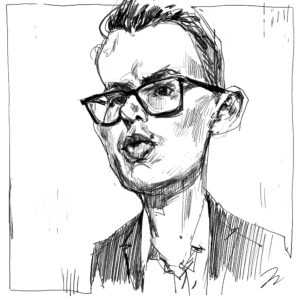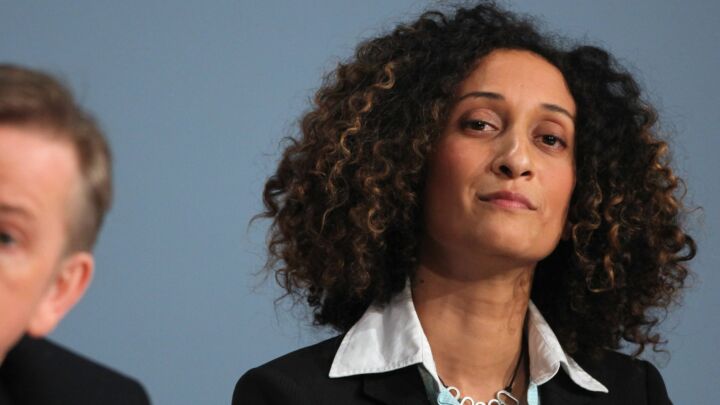The Hobbit: an unexpected pleasure
For all the fears that Peter Jackson had unduly stretched Tolkien’s slim novel, in fact he’s given us a rollicking watch.

The release of The Hobbit: An Unexpected Journey, Peter Jackson’s first instalment of his three-part adaptation of JRR Tolkien’s beloved novel, has been greeted with trepidation by fans and critics alike.
Certainly, no one could suggest Jackson wasn’t up to the job. His early 2000s adaptation of the great linguist and author’s seminal fantasy trilogy, The Lord Of The Rings, proved he was a faithful fan as well as a director with an eye for box-office-smashing spectacle.
If anything, The Hobbit should have been a breeze for the Kiwi director. Originally aimed solely at children, it was the light-hearted and concise introduction to the world of Middle-earth, with the following trilogy – published almost two decades later – serving up a more involved narrative for the now grown-up readers of The Hobbit to sink their teeth into. Strangely, however, Jackson has decided that this relatively straightforward and far shorter tome warranted another three films which, as is his wont, will each likely clock in around the three-hour mark.
While the 1,500-odd pages that make up LOTR necessitated the bloat of Jackson’s previous trilogy, this time around he would essentially be tackling about 100 sheets per outing. In order to pad things out, the screenplay plunders Tolkien’s appendixes to The Return of the King that offer a myriad of lesser-known characters and stories from the Middle-earth mythos. For many, this seemed to be at best an unwise decision and at worst a rather cynical one; either Jackson was giving in to his inner Tolkien geek, bringing to life as much of the author’s universe as he could possibly squeeze in, or he was merely trying to wring as many films out of it as he could, in order to match LOTR’s colossal box-office draw. In either case, Jackson seemed to be running the risk of diluting the source material he so adored.
Yet while reviewers are right to criticise its unavoidable flabbiness, Jackson’s Hobbit remains a thoroughly enjoyable and faithful retelling, which leaves us with plenty of hope for the following two instalments.
Bilbo Baggins (Martin Freeman) is a homebody who wants nothing more in life than his pipe, his slippers and his books. All this changes when Gandalf the Grey (Ian McKellen, reprising the role) comes knocking at his round, Hobbit-hole door. In the ward of a troupe of dwarves, hoping to reclaim their homeland from a malevolent dragon, the wizened sorcerer, rather inexplicably, decides that this nervy, hairy-footed midget is the missing link in their merry band of warriors.
Ignoring Bilbo’s protests, Gandalf assembles the rest of the troupe at Bilbo’s home, Bag End. As the dwarves file in, you can instantly tell this is a film much lighter of heart than the LOTR trilogy. While the formation of the ‘fellowship’ – sent to destroy the one ring in the fires of Mordor – was a rather downbeat, frowny affair, the plan to reclaim the mountain city of Erebor is unfurled at a riotous knees-up that Bilbo unwittingly hosts – him whinging passive-aggressively as they raid his pantry and tread mud into his carpet. Even Gandalf, stern and even crusty in LOTR, joins in the revelry.
The styling further accentuates this sense of playfulness. The dwarves are a far cry from Gimli, the single dwarf in the fellowship who looked like a short, weather-beaten roadie. With their bulbous noses, rotund bellies and elaborately platted beards, they strike a far more cartoonish figure, somewhere between troll dolls and garden gnomes.
When Bilbo is inevitably swayed to join the troupe, the journey that unfurls is peppered with moments of pure knockabout comedy. They come face to face with a trio of bone-headed cockney trolls and later do battle with a bombastic Goblin King voiced by Dame Edna herself, Barry Humphries. As well as being faithful to the text, this pronounced sense of whimsy is refreshing, especially because Jackson’s previous ventures into Middle-earth did, at times, border on the portentous.
The additions gleaned from the appendices serve to embellish and accentuate the plot rather than weighing it down. The most drastic of these is the integration of Azog – a fearsome albino orc and old nemesis of the dwarves’ leader, Thorin Oakenshield (Richard Armitage) – who becomes the company’s central antagonist. While he is a demonic and menacing presence in the film, he doesn’t sap any of the bounce out of proceedings and the blood feud between him and Thorin proves a decent arc with which to bring the film to a neat and somewhat self-contained conclusion.
The weightier ideas of the corruptibility of power and, by connection, modernity, which underline LOTR, merely hang in the wings of The Hobbit. Instead, this is a far more personal story, relating quite closely, some have argued, to Tolkien’s own experiences serving in the First World War. Like Bilbo, Tolkien was a bookish fellow pursuing a life of reserved study, when fate proved to have other plans for him. It is a story of taking one’s assigned role in the movement of history, before returning with a story to tell and a newfound appreciation for the comforts of home. Martin Freeman exudes his usual affable, everyman charm, effortlessly teasing out the character’s homely essence.
An Unexpected Journey is undoubtedly too long; its woefully unnecessary prologue, set just before the events of The Fellowship Of The Ring, seemed present only to remind people who might not have caught on that The Hobbit actually precedes the trilogy. But there are moments at which you’re glad the story was given room to breathe, as Jackson is able to delve into and expand upon some of the novel’s most inspired scenes. The best of which is the climactic encounter between Bilbo and a certain emaciated ring fiend called Gollum (brought to life once again by mo-cap master, Andy Serkis), where they engage in a game of riddles.
There has been fair amount of criticism concerning Jackson’s decision to film at 48 frames per second (twice the usual speed). The image is at times so crisp that the filmic spell is broken, as it shows up the artifice of the sets and the costumes. However, in scenes such as this, where you can see every bulge and wrinkle on Gollum’s revamped, digital visage – the potential for this pioneering new format is clear.
It remains to be seen if The Hobbit will survive being stretched over another two outings. But, after some uninspired outings since LOTR wrapped, An Unexpected Journey is a joyous homecoming to Middle-earth for Peter Jackson. Clearly, when armed with the right material, he can still cast quite a spell.
Tom Slater is spiked’s film reviewer. Visit his blog here.
See the trailer for The Hobbit here:
To enquire about republishing spiked’s content, a right to reply or to request a correction, please contact the managing editor, Viv Regan.









Comments
Want to join the conversation?
Only spiked supporters and patrons, who donate regularly to us, can comment on our articles.